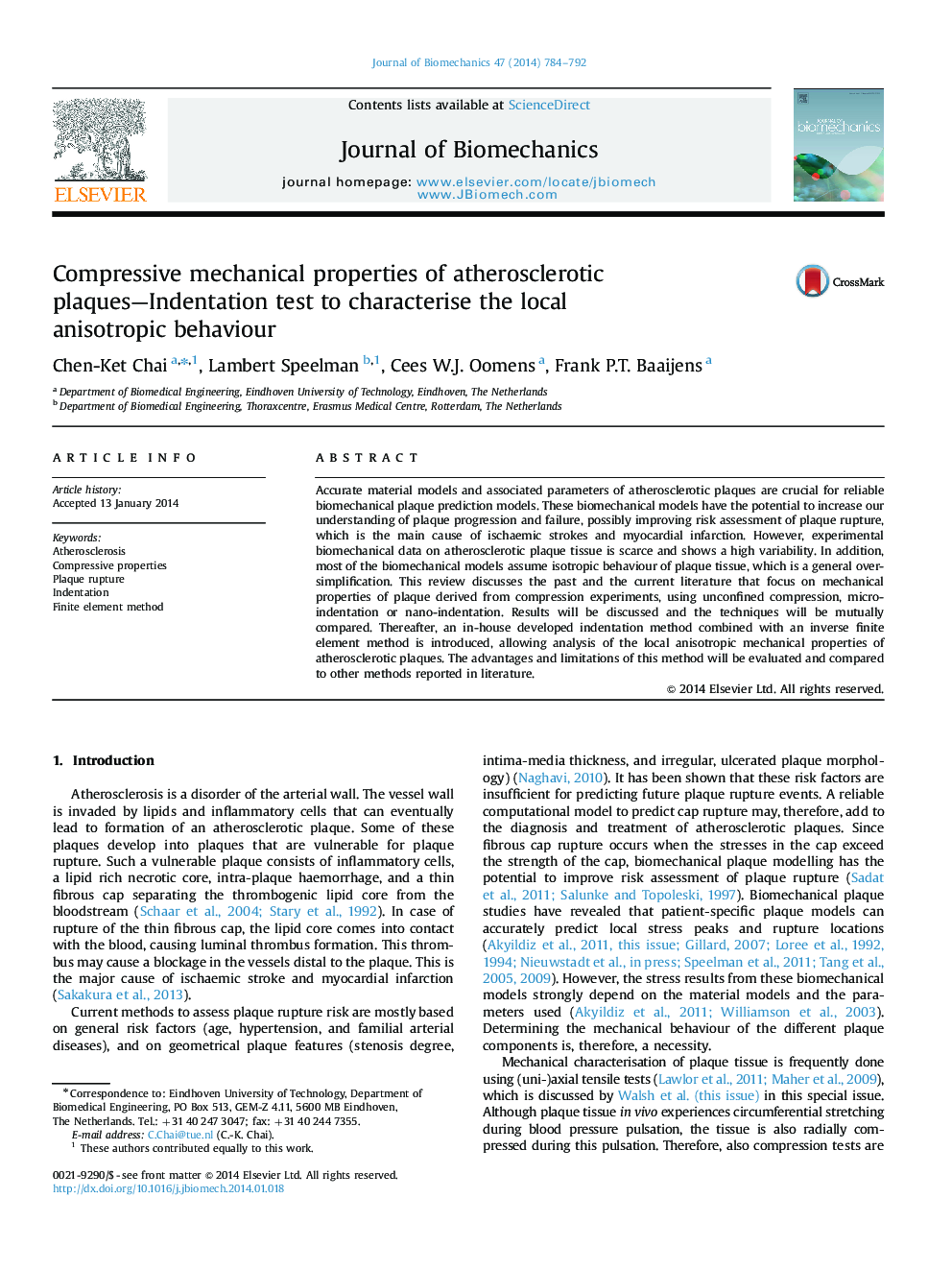| Article ID | Journal | Published Year | Pages | File Type |
|---|---|---|---|---|
| 10432211 | Journal of Biomechanics | 2014 | 9 Pages |
Abstract
Accurate material models and associated parameters of atherosclerotic plaques are crucial for reliable biomechanical plaque prediction models. These biomechanical models have the potential to increase our understanding of plaque progression and failure, possibly improving risk assessment of plaque rupture, which is the main cause of ischaemic strokes and myocardial infarction. However, experimental biomechanical data on atherosclerotic plaque tissue is scarce and shows a high variability. In addition, most of the biomechanical models assume isotropic behaviour of plaque tissue, which is a general over-simplification. This review discusses the past and the current literature that focus on mechanical properties of plaque derived from compression experiments, using unconfined compression, micro-indentation or nano-indentation. Results will be discussed and the techniques will be mutually compared. Thereafter, an in-house developed indentation method combined with an inverse finite element method is introduced, allowing analysis of the local anisotropic mechanical properties of atherosclerotic plaques. The advantages and limitations of this method will be evaluated and compared to other methods reported in literature.
Related Topics
Physical Sciences and Engineering
Engineering
Biomedical Engineering
Authors
Chen-Ket Chai, Lambert Speelman, Cees W.J. Oomens, Frank P.T. Baaijens,
